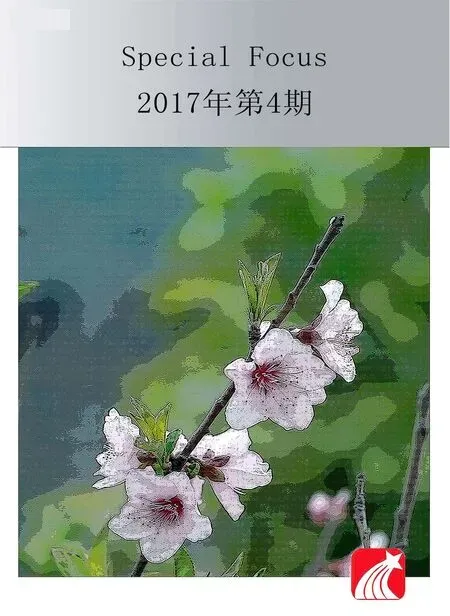第三章:天下茶仓在汉口
第三章:天下茶仓在汉口
Chapter 3: Hankou, China’s Great Tea Storehouse

清晨,太阳刚露出鱼肚白,江面在朦胧的迷雾中渐渐醒来。远处,时不时有悠扬的汽笛声传入耳畔。一群被叫做“扁担”的人早已在码头等候多时,只等货船靠岸,便有序地将一担担货物运至船舱、码放整齐。待所有货物装载完毕,一声笛响,货船便满载着货物渐渐远去。“扁担”们目送货船离开,同时也迎接着下一艘的到来……因为,这是他们得以养活全家的生计。
这是19世纪,汉口码头的繁忙景象。汉口是明清重镇,商业发达,码头众多。商人中间流传着这样几句话:“要做生意你莫愁,拿好本钱备小舟。顺着汉水往下走,生意兴隆算汉口。”
Early morning, the sun’s first twilight rays have just broken through the blackness of night, the soft white mist hanging over the lazy river’s surface has just begun to stir. From time to time, the sweet melodies of a wood flute wafts with the riverside breeze. A group of people called“polebearers” have long been waiting on the wharf for the cargo ship to dock or transport goods to the ship’s cabin in a neat and orderly fashion.
When all the goods are loaded, a whistle rings out shrilly piercing the morning air, the fully-loaded cargo ship carries the goods away and gradually disappears in the distance behind a foggy shroud. The “polebearers” watch the ship as it leaves, and then greet the arrival of the next ship. They scurry back and forth loading the cargo with great enthusiasm, as their next meal and in fact, their whole family’s next meal depends on it.
The afore described is a bustling scene of the Hankou pier in the 19th century astir with life. Hankou may have been small, but it was a town of no small importance to the Ming and Qing Dynasties owing to its strategic location. It was developed commercially, due to its many piers and docks. The businessmen of the time had a saying, “If you want to do business, get together some money and prepare a boat, sail down the Han River to Hankou, where money is plentiful and business is thriving. Peace of mind is only a boat ride away.”
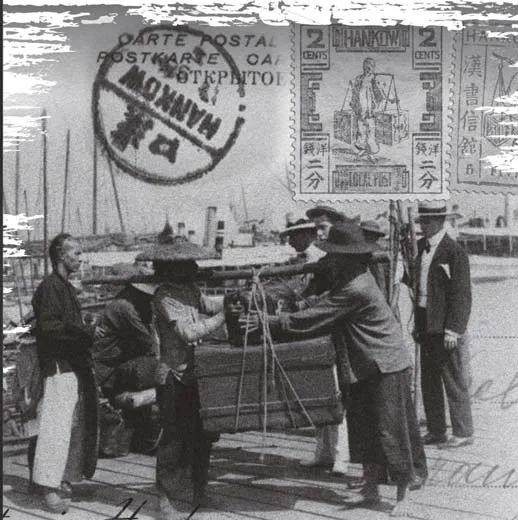
▲1893年武汉发行了历史上第一套邮票,名称为《担茶人》Polebearers carrying tea cases at the Hankou port depicted in the first set of stamps issued by the Wuhan Government in 1893

▲百里港口繁荣景,十里江滩忙碌地The flourishing port of Hankou

▲天下茶叶聚汉口,船舶江上栀如林 Hankou, the distribution center of Chinese tea
晚清时期,汉口因经济贸易发达被外国人艳称为“东方芝加哥”,而在其众多贸易中,茶叶占据了重要地位。当时,天下茶船齐汇汉口港,江面停泊的茶船多时达两万五千只,蔚为壮观。
武汉市社会科学院但瑞华在所著文章《俄罗商风云录》中写道:“不论是从鄱阳湖逆流而上的茶船,还是由黄盖湖顺水而来的砖茶,最终都指向一个目标,那就是汉口码头。”
茶到汉口盛,汉口因茶兴。1861年汉口开埠后,国外商人进入这个中国深处、长江最上端的港口,从此商贸繁盛,这种景象一直持续到20世纪初。有学者考证:丝、茶是中国对外出口的传统大宗商品,多以广州为输出港口。令人惊叹的是,汉口在辟为通商口岸的第二年,就在茶叶出口方面把广州抛在了后头,一跃成为中国最大的茶叶出口基地。
据资料显示,1861年由汉口港出口的茶叶达8万担,1862年为21.6万担,以后逐年增加;从1871年至1890年,每年出口茶叶均达到200万担以上。在这一时期,中国出口的茶叶垄断了世界茶叶市场的86%,而由汉口输出的茶叶则占国内茶叶出口总量的60%,年输出总值200余万两白银。
穿梭往来的运茶船队出入汉口港,汉口成为全国最大的国际性茶叶交易市场,被欧洲人称为“茶叶港”。汉口“天下茶仓”的地位由此确立。
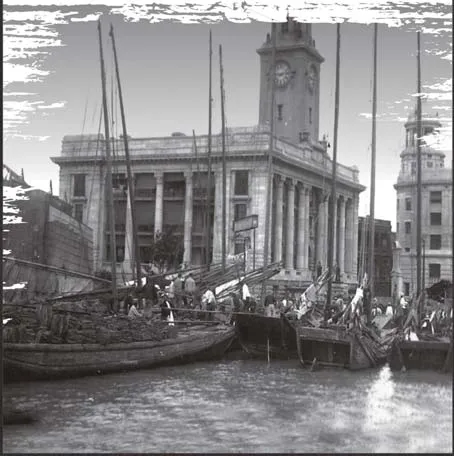
In the late Qing Dynasty, owing to Hankou’s developed economy and trade, the city was christened the “Chicago of the Orient” by foreigners, and tea held a prominent position in its multifarious modalities. Every tea-toting vessel of the time converged on the port of Hankou, where the river was sometimes overflowing with more than twenty-five thousand tea ships all anchored into one tight port. It must have been a splendid spectacle for the eye to behold.
In an article entitled, “The Russo Trade Memoir,”Dan Ruihua of Wuhan Academy of Social Sciences wrote, “Regardless of whether the tea boat came chugging its way upstream from the Poyang Lake, or meandered its way over from Huanggai Lake, their ultimate goal, was always the same: to dock at Hankou.”
Teas a plenty were shipped to the Hankou docks, while tea ships tote riches to Hankou in flocks. After the ports at Hankou were opened in 1861, throngs of foreign businessmen pushed into the very depths of China, to the ports at the upper extremity of the Yangtze River, and from there trade and commerce flourished. Such a dizzying scenario continued on until the early 20th century. Scholars have noted that silks and teas were staples of China’s traditional commodity exports, which were mostly shipped out from the port at Guangzhou. But what is truly astonishing is, that in just the second year after the port of Hankou was opened to trade, its tea exports left Guangzhou in the dust, and in one quantum leap it became China’s largest tea export base.
Statistics show that in the year 1861, four million kilograms of tea were shipped out of the Hankou port, but just one year later, in 1862 tea exports totaled over ten million kilograms, and the number gradually increased year after year; from 1871 to 1890, annual tea export topped one hundred million kilos. During this age, China monopolized the world tea market with an 86% market share, while tea exports from Hankou accounting for 60% of total domestic tea exports, with a monetary value of over two million silver taels.
The shuttles came and went, transporting teas in large fleets from the port of Hankou, while the city became the country’s largest international tea market, with the Europeans dubbing it “the tea port.” Hankou’s status as “the world’s tea storehouse” was established.
汉口并非茶叶产区,缘何能成为天下茶仓?据湖北省社会科学院专家袁北星考证分析:中国是茶叶的原产国,长江流域的湖南、湖北、安徽、江西、浙江、福建等地是中国名茶的主要产地,汉口正处于这些茶叶产区的中心地带,且拥有两江交汇、九省通衢的优越地理位置,因此“湖南茶溯湘江、沅江、澧水,陕甘茶循汉水,江西宁州茶及安徽祁门茶溯江而上,四川茶顺江而下,麇集于汉口”。
1861年汉口开埠后,中西互贸频繁,茶叶为西方人喜好,成为出口大宗商品,尤其是质优红茶,大量出口美、俄、英、法、德、意等国,汉口更加成为中国茶叶最大的集散地。
汉口的茶在历史上究竟有多辉煌?民国《夏口县志》有浓墨重彩的记载:1915年的巴拿马万国博览会上,汉口茶商取得骄人成绩,汉口工商业共捧回20个一等金牌奖,茶商就占据18席;在8个二等奖中,茶商也占据半壁江山。

▲壮观的汉口茶港 The magnificent Hankou Port, overflowing with tea ships

▲沿江大道上的城雕,文化沉淀City statue in Riverside Avenue, “deposit” of port culture in Hankou
Hankou was never an actual tea-producing area, so what empowered it to become the world’s great tea storehouse? According to Hubei Academy of Social Sciences researcher Yuan Beixing’s analysis, China is the original tea-producing region, and the areas near the Yangtze River like Hunan, Hubei, Anhui, Jiangxi, Zhejiang, Fujian are the epicenters of Chinese tea production. Hankou is situated directly in the middle of this vast geographical thoroughfare, right at the intersection of two rivers and nine provinces. Therefore, “Hunan tea comes from down the Xiang River, the Yuan River or the Lishui River; Shaanxi and Gansu tea comes from ships following the Han River; Jiangxi Ningzhou tea and Anhui Qimen tea comes from shipping vessels trudging against the current; while Sichuan tea comes in barges being pushed gently along with the currents. All of them were flocking to the same place—Hankou.”
After the opening of the Hankou port in 1861, Chinese and Western trade was frequent, tea was well-liked by Westerners and became a staple of Chinese exports, most especially high-grade black teas. Large quantities were exported to the United States, Russia, Britain, France, Germany, Italy and other countries, while Hankou became an even larger and more prominent distribution center for Chinese tea.
Just how brightly does Hankou tea shine in the annals of history? During the 1915 Panama-Pacific World Exposition, as recorded in Xiakou County Records written during the Republic of China (1912-1949), Hankou tea merchants made remarkable accomplishments; Hankou industry and commerce took a total of 20 first-class gold medals, among which, Hankou tea merchants occupied 18 of the top places, and half of the eight second-class awards as well.
如今,在汉口的老街上,仍能找到当时的繁盛印记——
在鄱阳街与洞庭街的呈40°交汇处,一栋红色三角形建筑浑然天成,两翼顺着两条街排开,在交会处形成窄而高耸的转角、入口、圆顶,像一艘行驶在海面的大船。船头将街面往两边劈开,角尖处,街道朝五个方向呈星状幅射出去,气势磅礴。
这是汉口最早的多层公寓楼。据当地人介绍,原来的屋主人叫巴诺夫,人称巴公,是俄国贵族、沙皇尼古拉二世的表兄。巴诺夫曾任俄国驻汉口总领事,又是俄商阜昌砖茶厂厂主,为汉口四大俄国茶叶富商之首。他是“中国通”,来汉不久就摸清了三镇的风土人情,操一口流利汉语。
巴诺夫因为茶叶生意成为汉口最有财势与声望的人物,并买下长江边英人跑马场的大片土地,成为俄租界内最大的地产拥有者。此后,各国商人纷纷在汉口购置房产。
而在巴诺夫的阜昌砖茶厂建立之前,另一俄商李维诺夫于1863年建立顺丰砖茶厂。这是汉口自行发电、拥有当时最新式蒸汽机和各种先进制茶机械的第一家近代工厂,还建起了汉口长江边上第一座工厂专用码头——顺丰茶栈码头。顺丰砖茶厂雇佣的800余工人,构成了武汉第一支产业工人队伍。
中国茶叶学会常务理事、湖北省茶叶学会副理事长张岳峰介绍,19世纪中期,俄国人来汉口做起了茶叶生意,开启了汉口作为“茶叶港”长达半个多世纪的“黄金时代”。汉口俄国茶叶贸易公司多达数十家,一时之间,“汉口烟筒林立者,即俄商以机器制茶之屋也”。
随着“万里茶道”的繁盛,当时的俄国茶商几乎操纵了汉口砖茶市场。阜昌、顺丰、新泰、源泰四家砖茶厂的老板,被公认为汉口租界最富有的洋人。而以巴公房子为核心的这片区域,成为汉口俄国茶商聚集的“社区”。
随着十月革命的隆隆炮声,俄商在汉口的茶叶生意日渐萧条,顺丰和阜昌均在1917年停工,而新泰砖茶厂苦撑十几年后,也于1932年转租给英商,俄商独占汉口茶市的局面从此结束,俄国人也纷纷离开汉口——这个他们曾经实现财富梦想的地方。
遒劲立柱,穿透了百年风霜;逶迤廊檐,抵挡住千里雨雪;斑驳沧桑,掩不住古朴精美;一砖一木,承载了历史荣辱。
巴公房子、李维诺夫别墅、东正教堂、新泰洋行、阜昌路(今南京路)……19世纪俄国人在汉口留下的遗存几乎都与茶商有关。
虽然很多建筑已经有了岁月斑驳的痕迹,我们仍能从这些地名和老宅之上寻觅到当年老汉口繁华的踪迹,追寻当年汉口茶港的辉煌年代。它们目睹了政权的更迭,经历了繁盛和破落,成为当年汉口大茶仓的见证者。
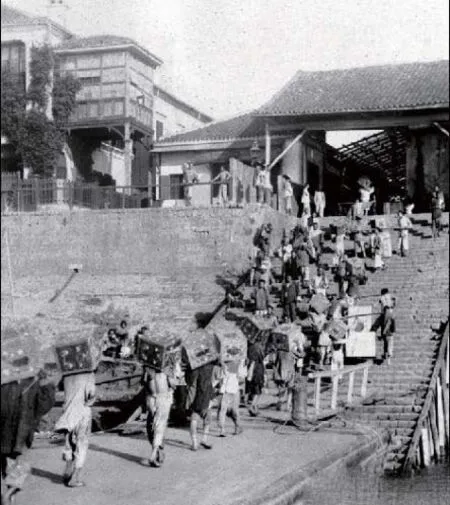
▼苦力在码头搬运茶叶Workers carrying tea to the port of Hankou
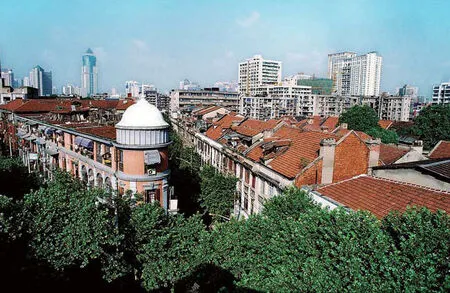
▼巴公房子现状(图1、2、4)View of Duke Baranov’s house (photos 1, 2 and 4)
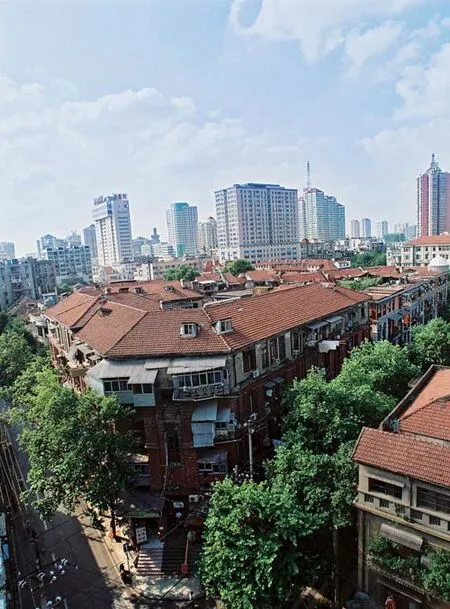

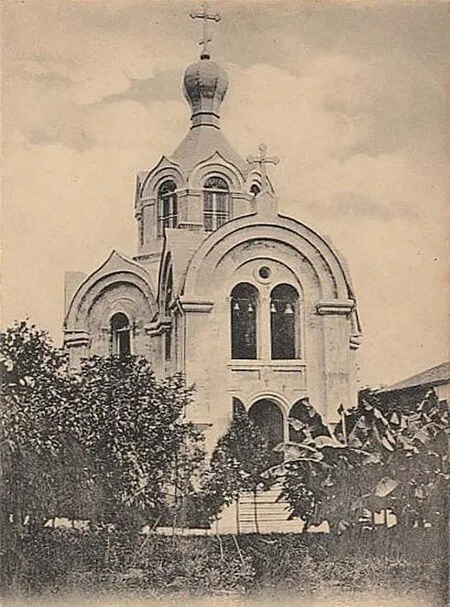
▲东正教堂 Russian Orthodox Church
Even today in the old-town part of Hankou, one is still able to unearth the signs and vestiges of the prosperity of that era—at the 40 ° intersection of Boyang Street and Dongting Street, a work of art in the form of a red triangle building with a great wingspan that enfolds both sides of the street, forming a narrow but lofty nook where there is an entrance and a dome, like a giant sea-barge cutting through the frothy waves. The bow of this great ship splits the side street in two, the corner is acute and juts out in five directions like a star, shooting out its shafts of light and cutting a grand and magnificent form out of the sky.
This stately construction is the earliest multistorey apartment building in Hankou. According to the locals, the original owner of the house was a man named Baranov, who was known as Duke Baranov, due to the fact that he was a member of the Russian aristocracy and cousin of Tsar Nicholas II. Baranov served as Russian Consul General in Hankou, but he was also a Russian businessman and owner of the Fuchang Brick Tea Factory and was the foremost of the four wealthiest Russian tea merchants in Hankou. He was a “Sinologue” who had felt out the local customs and culture soon after arriving in Hankou— and he dazzled the locals with his fluent Chinese.
Baranov became the most well-heeled and prestigious figure in Hankou due to the flourishing tea business and he bought large tracts of land next to the Yangtze River that had been a British racecourse, becoming the largest and most powerful real estate owner in the Russian settlement. After that, businessmen flocked to the city in droves to buy property in Hankou.
Before the establishment of Baranov’s Fuchang Brick Tea Factory, there was another Russian businessman—this one called Litvinov—who established the Shunfeng Brick Tea Factory in 1863. This was Hankou’s very first modern factory with self-generating power, the latest steam engine and a variety of advanced tea-making equipment. He also commissioned the construction of Hankou’s first dock that was dedicated for use by a factory along the edge of the Yangtze River—Shunfeng Tea Storehouse Dock. Shunfeng Brick Tea Factory employed more than 800 workers, who constituted the first team of industrial workers in Wuhan.
Zhang Yuefeng, vice chairman of China Tea Research Society and vice president of Hubei Tea Society said that, in the middle of the 19th century, the Russians came to Hankou to start tea business and started Hankou’s “tea port”that ushered in the “golden age” that lasted for more than half a century. There were dozens of Hankou Russian tea trading companies, and for a period of time, “Mechanized Russian tea factories can easily be identified just by spotting the clusters of smokestacks in Hankou.”
With the prosperity of the Tea Road, the Russian tea merchants at that time nearly monopolized the Hankou brick tea market. The owners of the four major brick tea factories, namely Fuchang, Shunfeng, Xintai and Yuantai, were recognized as the wealthiest foreign businessmen in the Hankou settlement. And this area, which is centered on Duke Baranov’s mansion, became the “hub” for Russian tea merchants in Hankou.
With the rumbling cannon and gunfire of the October Revolution, business prospects became increasingly bleak for the Russian businessmen in Hankou tea industry. Shunfeng and Fuchang suspended operations in 1917, and Xintai Brick Tea Factory, after struggling for ten more years, was sublet to a British business in 1932.Russian business interests in the Hankou tea market came to an end. The Russians themselves were also forced to leave Hankou, the place where they had once made their dreams of wealth come true.
Powerful pillars set deep into the ground, through a hundred years of wind and frost they remain sound; a long winding passage, resists a thousand storms’ pound; even if flecked and paled by vicissitudes of life, the elegance of the fief cannot be obscured; every brick, every tree, carries on the glory throughout history.
The Baranov Mansion, the Litvinov Villa, the Russian Orthodox Church, Xintai, Fuchang Road (now Nanjing Road) ... the remnants left behind by the Russians who come to Hankou in the 19th century in hot pursuit of fortune almost all have something to do with tea.
Although many buildings are now flecked with the traces of years, we can still glimpse the old from these lists of names of the usual suspects, and on these weathered buildings of old downtown Hankou, the traces of the years of the pursuit of the riches and glory of the Hankou tea port still remains visible. These historical structures have witnessed the political regime change, experienced equal shares of prosperity and poverty, and have thus become the greatest witnesses, bearing testimony of the epoch of the great Hankou tea storehouses.
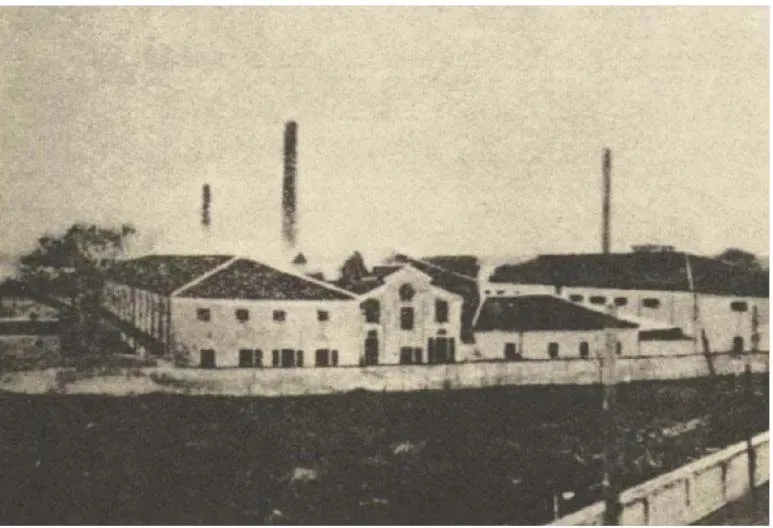
▲汉口顺丰砖茶厂 Shunfeng Brick Tea Factory in Hankou

▲工人在砖茶厂制茶 Workers processing tea in the factory

